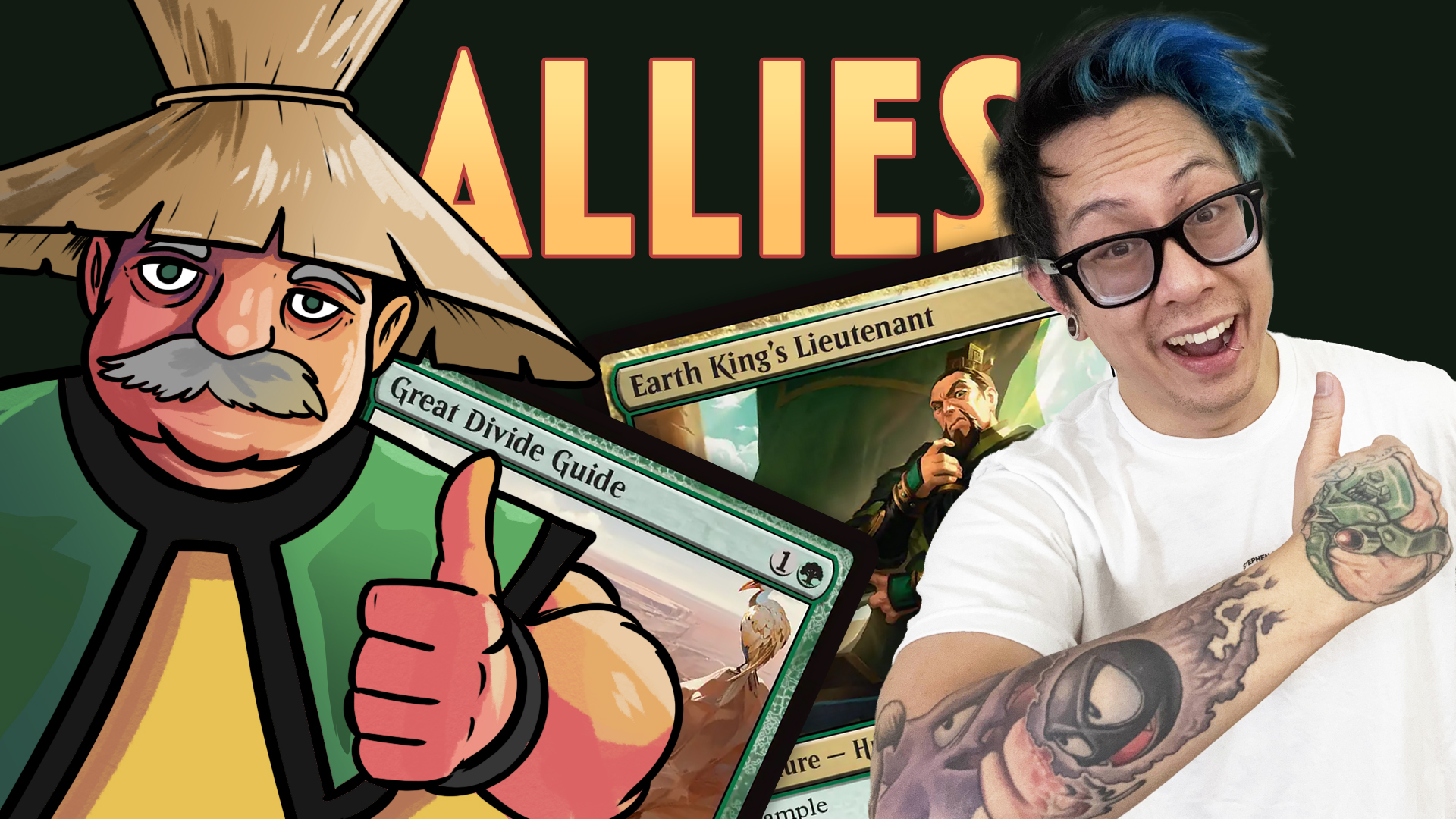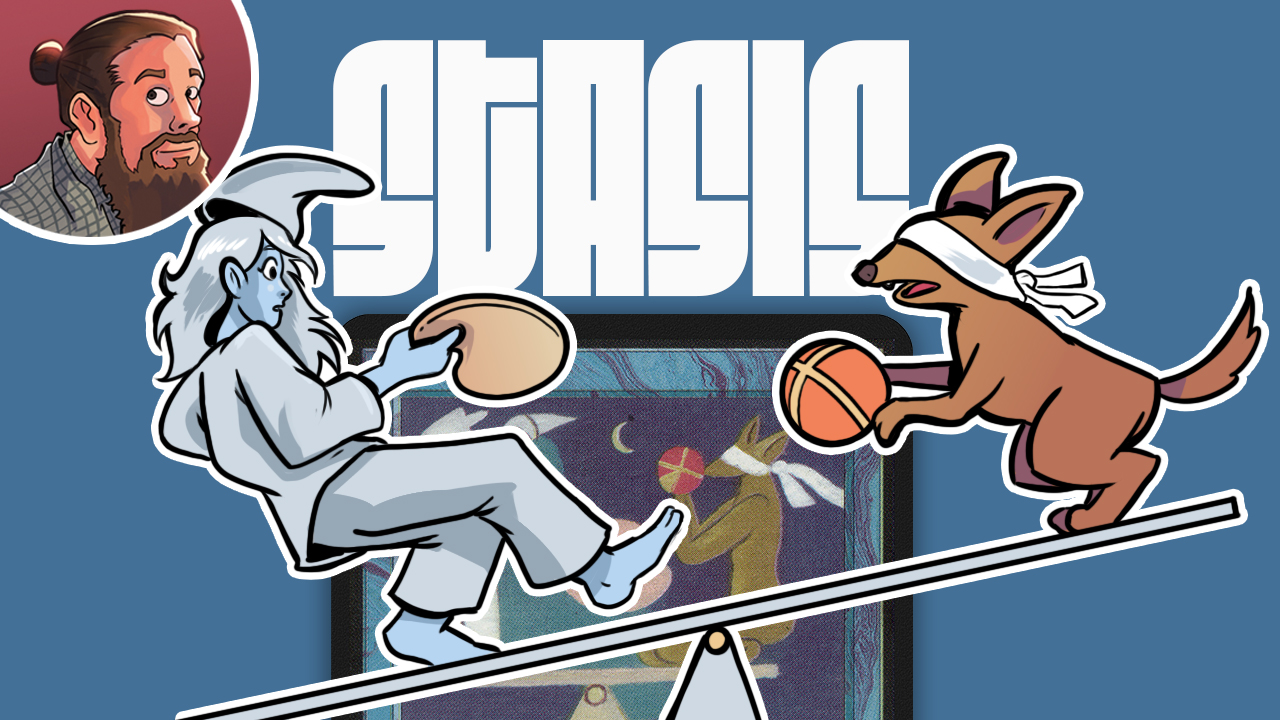Budget Magic: "Manaless" Affinity (Modern)
Nǐn hǎo, Budget Magic lovers, it's that time once again! Last week, a viewer going by the name KingDaddyPwnage sent me a super-unique and super-cheap Modern deck called "Manaless" Affinity. Normally, we play decks that I build on the series, but the idea was funny and unique enough that I couldn't pass up the opportunity to make a couple of small updates and take the deck out for a spin, which is what we're doing today for Budget Magic. While the deck isn't technically fully manaless (it has a total of six lands that can produce mana), we're more than willing to keep hands with literally zero lands since the idea of "Manaless" Affinity is to use cheap artifacts to power out massive affinity or improvise threats on Tu1 one and hope that a fast Salvage Titan, Myr Enforcer, or Barricade Breaker or two will be enough to win the game! Can this ridiculous plan actually work in Modern? Let's get to the video and find out; then, we'll talk more about the deck!
Another quick reminder: if you enjoy Budget Magic and the other content on MTGGoldfish, make sure to subscribe to the MTGGoldfish YouTube channel to keep up on all the latest and greatest.
Budget Magic: "Manaless" Affinity

The Deck
Manaless Affinity is basically a really weird all-in artifact aggro deck. The goal is to empty our entire hand on Turn 1, starting with a bunch of free artifacts, which end up adding mana in a really weird, roundabout way thanks to our finishers featuring the improvise or affinity mechanic.
The "Mana"


While the deck might be called "Manaless" Affinity, technically, we have a tiny bit of real mana, with a total of six lands, although it's important to point out that these cards are essential to our deck's functioning and we regularly keep hands with zero lands. The original build of the deck had just four copies of Sanctum of Ugin, which does add a mana but is really in the deck to tutor up additional finishers. (For example, we can cast a Myr Enforcer for free and sacrifice Sanctum of Ugin to tutor up another one to cast for free, doubling up our threats.) After messing around with the deck a bit, I realized that Darksteel Citadel was too good to pass up since it is essentially a painless Ancient Tomb with affinity (reducing the cost of our affinity cards by one by being an artifact and also adding a mana), so we ended up with a 3-3 split of Darksteel Citadel for Affinity purposes and Sanctum of Ugin to tutor up more finishers. One of the deck's weirdest aspects is that we never really want more than one lands in our hand (and zero lands is perfectly fine most of the time), so adding additional lands actually makes the deck worse, rather than better. I ran some numbers through the hypergeometric calculator, and with six total lands in the deck, we'll only have two or more in our opening hand 14% of the time. This means we'll have either zero or one 86% of the time, which is exactly what we want.
Free Stuff


Since we're not really using lands to make mana, we need another way to cheat big threats into play quickly, and the answer to this problem for "Manaless" Affinity is free artifacts. Our deck is overflowing with basically any artifact that costs zero mana since these cards help to power up our finishers. Cards like Memnite and Ornithopter sometimes add a bit of value by chump blocking or even attacking, but in reality, they are usually just +1 artifact on the battlefield.



Mishra's Bauble, Tormod's Crypt, and Welding Jar are similar. While they each add a bit of value when they are on the battlefield, with Mishra's Bauble cycling, Tormod's Crypt answering our opponent's graveyard (which is meaningless in some matchups but game-winning in others), and Welding Jar regenerating one of our big artifact finishers, in reality, the are all in our deck because they are free artifacts.



We want a hand full of free artifacts so badly that we are willing to play some that do very close to nothing. Since we have so little real mana in our deck, it's unlikely that we'll actually equip a Bone Saw or a Paradise Mantle to a creature, and Briber's Purse most often comes into play for zero mana and with zero counters, but each of these cards increases the number of artifacts we have on the battlefield on Turn 1.


Next up, we have two more free artifacts, but these require other artifacts on the battlefield to become free. Assuming we can play four of our zero-mana artifacts, Frogmite becomes a zero-mana 2/2, which isn't super exciting but is much better than a Briber's Purse or some of our other free artifacts. The same is true for Tooth of Chiss-Goria. While giving a single creature +1/+0 isn't much, it is something, which is more than many of our free artifacts do. More importantly, each of these cards further increases our artifact count, which is essential for our big payoffs...
The Finishers


So, why are we willing to stuff our deck full of free artifacts that do little or even literally nothing? The answer is that they help get us to one of our finishers on Turn 1. Assuming we choose to go on the draw, on our first turn, we'll have eight cards in hand after drawing for our turn. In theory, this means we can play seven free artifacts plus a finisher (one land, six free artifacts, and a finisher also works, but if we have two lands in our opening hand, our "combo" fizzles, and we'll be short on artifacts to play finishers, which is why going up to more than six or maybe eight total lands is risky). Assuming we can play seven free artifacts, we can finish off Turn 1 with either a 7/5 Barricade Breaker or a 4/4 Myr Enforcer. (If we happen to have a Sanctum of Ugin to sacrifice and tutor up another colorless card, we can have both!) Basically, the primary goal of "Manaless" Affinity is to end up with at lest one massive creature on the battlefield on Turn 1 and then hope that the creature is enough to close out the game.

Salvage Titan is an interesting backup finisher. The good news is that because we can cast it by sacrificing three artifacts rather than paying its mana cost, with a good draw, we can end up with two Salvage Titans on the battlefield on Turn 1 or 2, and two 6/4s is often enough to close out the game before our opponent can recover. The bad news is that because Salvage Titan requires us to sacrifice artifacts, it's anti-synergistic with cards like Myr Enforcer and Barricade Breaker. We have some games where we sacrifice artifacts to play Salvage Titan on Turn 1 and then top-deck another finisher on Turn 2, only to have it stuck in our hand since we don't have enough artifacts left to affinity or improvise it into play.
The other big upside of Salvage Titan is that we can return it to our hand after it dies and theoretically cast it against for free by sacrificing more artifacts. While our main plan is to win the game quickly before our opponent can disrupt us with removal or blockers, if this plan doesn't work, our Salvage Titan gives us at least some chance of playing a longer game by offering a big, recursive threat.

Foundry Assembler is probably my least favorite card in the deck. While we can usually improvise it out on Turn 1, it's only a 3/3, which isn't often enough to win a game of Modern. And since we have to tap all of our other stuff to cast Foundry Assembler, we can't cast it and also improvise out Barricade Breaker on the same turn. Basically, Foundry Assembler is a bad version of Frogmite that often costs us a chance to cast a bigger threat on Turn 1. While it's not unplayable, and although it does fit the theme of our deck, it's usually the card that I end up sideboarding out the most.
The Sideboard



Since we don't really have mana in our deck, our sideboard is stuffed full of things that can come into play for free. Leyline of the Void gives us additional graveyard hate. Leyline of Sanctity offers protection from discard and some combo finishers (like a Grapeshot to the face, for example). Gut Shot and Marrow Shards can take care of any small creatures our opponent might play. Finally, the one copy of Wastes is mostly to bring in against decks with Path to Exile so that we get at least some value back when our opponent exiles our finisher.
A warning on the sideboard: because the entire idea of our deck is to have eight artifacts (or one land and seven artifacts) in our hand on Turn 1 after drawing for the turn, we can't bring in too many sideboard cards at once, or else we end up weakening our combo-esque starts. In general, you shouldn't sideboard in more than four cards in any given matchup. I generally cut the three copies of Foundry Assembler and maybe one land to make room.
Playing the Deck
While playing "Manaless" Affinity isn't really hard, the idea of the deck is so weird that you'll probably have a rough go if you play it like you would a more traditional deck. First and most importantly, you generally should choose to draw first with the deck if given the choice (considering that opponents always choose to be on the play if they have the option, it isn't hard to be on the draw 100% of the time). This is because of how the math works out. Remember: to play a Barricade Breaker or Myr Enforcer on Turn 1, we generally need eight cards in hand (seven free artifacts and a finisher or six free artifacts, one land, and a finisher). If we choose to play first, we can't play a finisher anyway because we'll be a mana short, so we may as well go on the draw and get an extra card out of the deal.
This same math also means that mulliganing is especially brutal in "Manaless" Affinity because each mulligan means waiting one more turn to have enough artifacts to cheat a finisher into play. While we sometimes still have to mulligan (hands full of finishers without cheap artifacts to get them into play are basically auto-mulligans), it is often better to keep a hand that it just short of doing something powerful and hope that our deck provides what we need over the first turn or two.
It's also important to point out that the deck is pretty much a glass cannon, built to either win or lose quickly. Sometimes, we play a Barricade Breaker on Turn 1, and it wins the game by itself. Sometimes, we empty our hand to play a Barricade Breaker on Turn 1, our opponent has Path to Exile, and we spend the rest of the game drawing Bone Saws and Tooth of Chiss-Gorias as we lose. This play pattern is sort of built into the deck's design. We put our opponent to the test on Turn 1 as consistently as possible and hope that our opponent fails and we pick up a free win. If our opponent passes the test and can kill our finisher, we normally just move on to the next game.
Wrap-Up
I honestly had no idea what to expect for "Manaless" Affinity going into our matches, and we ended up 2-3, which isn't an absurdly great record or anything like that, but considering the weirdness and jank level of the deck, I was pretty happy with the results, especially considering that two or our three losses were extremely close (including an absurd 12-turn game against Mono-Red Prowess where we came super close to getting the reverse-flawless victory after exiling all of our stuff to cast Salvage Titan several times). While I don't think "Manaless" Affinity is top-tier competitive (or even third-tier competititve), it is hilarious and works way better than I feared it would.
As far as changes to make to the deck, the only card that I really didn't like was Foundry Assembler. Next time I play the deck, I might cut it for one more Darksteel Citadel, a Sanctum of Ugin, and another Bone Saw. Going up to eight lands is a bit risky (we'll have two-plus land openers just over 20% of the time, rather than 14% of the time), but Foundry Assembler just didn't feel good in the deck. If you don't want to add additional lands, the other option would be to embrace the meme fully and replace it with Darksteel Relic, a free artifact that literally does nothing!
So, should you play "Manaless" Affinity? In a lot of ways, the deck reminds me of something like Zombie Hunt. It's a really unique glass-cannon meme deck that is good enough to win games but also folds to disruption way too often to be truly competitive. I wouldn't recommend making it your primary Modern deck, but I think it's a hilarious deck to have around to break out on occasion. The absurd starts it can get certainly would catch the eyes of everyone at your LGS if you break it out at an FNM, and who knows? If you run well and hit the right matchups, you'll probably even win some matches along the way!
Ultra-Budget / Non-Budget "Manaless" Affinity
As far as making "Manaless" Affinity even cheaper, the easiest pathway is to cut the Leylines from the sideboard. While they are good in some matchups, they aren't essential to the deck's success. Especially if we go up to eight lands, it might also be worth considering Dismember as removal for bigger creatures, even though it will end up stuck in our hand in some games when we have zero mana on the battlefield.
As for a non-budget build, my advice would be to not try to upgrade the deck. The appeal of "Manaless" Affinity is that it's cheap enough that you can build it as a backup deck to play for fun when you're in the mood. Plus, considering we're basically restricted to free spells, there isn't really much we could add to the deck to further power it up anyway. If you want an artifact-aggro play style that is a tier deck, I'd look toward something like Hardened Scales or maybe a more traditional Affinity build with mana and cards like Arcbound Ravager.
Conclusion
Anyway, that's all for today! As always, leave your thoughts, ideas, opinions, and suggestions in the comments, and you can reach me on Twitter @SaffronOlive or at SaffronOlive@MTGGoldfish.com.













